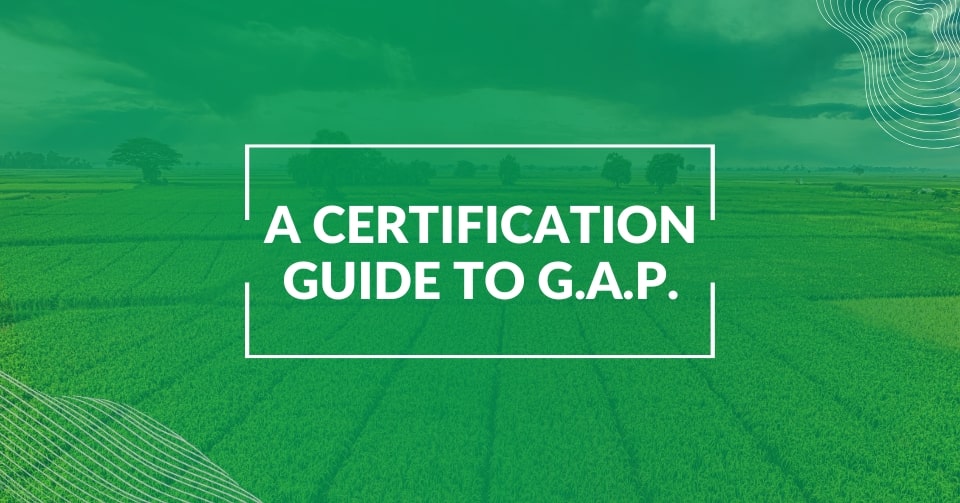In the food manufacturing industry, where precision, hygiene, and compliance are critical, understanding the speed and risks of bacterial contamination is essential. Cross-contamination occurs when harmful bacteria are unintentionally transferred from one surface, food, or person to another, often without detection. Bacteria are microscopic organisms that can multiply rapidly in the right environment, often going unnoticed until it’s too late. When food products are exposed to the “danger zone”, bacterial cells can double every 20 minutes. That means in just a few short hours, a single bacterium can grow into thousands or even millions, according to the USDA.
For food manufacturers, large quantities of food are processed, stored, and transported daily, which can seriously threaten product safety, consumer health, and brand integrity.
Why Is Bacterial Contamination a Serious Concern?
Bacterial contamination can spread quickly in a facility that lacks strong controls and sanitation protocols. Cross-contamination, poor employee hygiene, inadequate refrigeration, and improper cleaning practices are just a few of the many ways bacteria can make their way into products.
For example, if raw and cooked products are handled on the same surface without proper sanitization in between, harmful bacteria like Salmonella or Listeria can easily contaminate the finished product. The Centers for Disease Control and Prevention (CDC) consistently identifies these pathogens as leading causes of foodborne illness outbreaks.
The consequences can be severe, leading to costly recalls, legal action, damaged reputations, and, most importantly, putting consumers at risk of foodborne illness. Reviewing the history of foodborne illness outbreaks in the U.S. reveals just how devastating the outcomes can be when food safety systems fail..
This rapid spread of contamination is something I witnessed firsthand during my time working in a laboratory at a commercial blueberry plant nursery. In the micropropagation lab, we propagated new plant varieties under sterile conditions, using careful aseptic techniques and rigorous sanitation protocols. Despite this, contamination was still a recurring challenge, often becoming visibly noticeable within only 5 to 7 days after propagation. The contamination could come from the slightest lapse in technique, a single unsterilized tool, or an undetected contaminant in the growth medium. It was a clear and constant reminder that bacteria (and fungi) require very little to begin multiplying and can thrive in seemingly controlled environments. This experience has given me a deep appreciation for how vigilant and proactive food facilities must be when it comes to contamination prevention.
What Is the Importance of Temperature Control?
The first and most crucial step in preventing contamination is maintaining strict temperature control throughout your facility. Perishable ingredients and finished goods should be stored at temperatures that prevent bacterial growth—below 40°F (4°C) in refrigerators and at 0°F (-18°C) or below in freezers. It’s also essential to limit the amount of time that products spend outside of cold storage.
A common mistake in production is allowing food to sit out too long during transitions, such as from prep to packaging. Even a one- or two-hour delay in the wrong environment can give bacteria the chance to multiply to dangerous levels, as noted by the U.S. Food and Drug Administration (FDA).
Does Employee Hygiene Make A Difference?
Equally important is ensuring that all employees understand and practice good hygiene. Workers should wash their hands with soap and water for at least 20 seconds before beginning work, after any breaks, and especially after using the restroom or handling raw materials.
In high-risk environments like ready-to-eat production lines, protective clothing, gloves, and hairnets should always be worn correctly. A lapse in hygiene (even a single touch from a contaminated glove) can lead to widespread bacterial contamination, particularly in batch production where one mistake can affect hundreds or thousands of units.
Cross-Contamination: A Hidden Threat
Cross-contamination is a major contributor to bacterial outbreaks and must be addressed with well-defined procedures. All equipment, surfaces, and utensils should be cleaned and sanitized between uses, especially when switching between raw and cooked products or allergens and non-allergens.
Color-coded tools and clear signage can help prevent accidental mixing. Additionally, raw products should always be stored on lower shelves in cold storage areas to avoid dripping onto other items. This is a simple yet powerful measure that significantly reduces the risk of cross-contamination.
Cooking and Processing Safely
Cooking and processing temperatures play a major role in controlling bacteria. Food manufacturers must ensure that all products reach their required internal temperatures during cooking to destroy harmful pathogens. Inadequate or uneven cooking may leave parts of the product undercooked, allowing bacteria to survive. Regular calibration of cooking and cooling equipment, along with spot-checks using food thermometers, helps confirm that temperatures remain consistent and safe throughout production.
The USDA provides a chart on safe internal cooking temperatures for different food categories.
What Are The High-Risk Ingredients?
Aside from handling and storage practices, food businesses need to stay aware of high-risk foods and ingredients. According to the CDC, the following items are particularly susceptible to contamination and should be handled with extra care:
- Ground meats
- Soft cheeses
- Leafy greens
- Unpasteurized dairy
These foods are frequently linked to foodborne illness outbreaks and require strict controls during sourcing, preparation, and storage. Sourcing ingredients from reputable suppliers who follow robust food safety practices is another critical layer of protection. Supplier verification programs and regular audits help ensure that food safety standards are met before products even arrive at your facility.

Why Does a Food Safety System Matter?
Implementing Systems That Work
In addition to everyday preventive measures, having a strong food safety management system in place is vital. This includes detailed standard operating procedures (SOPs), hazard analysis and critical control point (HACCP) plans, employee training, internal audits, and traceability systems.
Using Digital Tools to Stay Ahead
Digital tools like those offered by FoodReady make it easier to manage these components in one centralized platform. From documenting temperatures to assigning corrective actions, digital food safety software helps companies stay proactive rather than reactive when it comes to contamination.
Prevention Is Always Better Than Reaction
Once bacterial contamination occurs, the cost of remediation can be significant. Not just financially but in terms of public trust. A single recall can cost a company millions in lost revenue, legal fees, and damage to brand reputation.
More importantly, it puts consumers at risk, which can lead to hospitalization or even fatalities in severe cases. For this reason, investing in prevention through better education, proper hygiene, reliable equipment, and smart digital solutions is far more effective than dealing with the consequences of contamination after it’s already spread.
Start Strong with FoodReady
FoodReady supports food manufacturers in implementing and maintaining strong food safety programs. From customizable HACCP plans and daily logs to real-time data tracking and audit readiness, our platform is designed to make food safety management more straightforward and effective. Don’t wait for contamination to strike—get started with FoodReady today and ensure your facility is always one step ahead.
Try it out today!
Ready to level up your Food Safety Game? Click now to book a free demo!
Conclusion
Bacterial contamination can spread quickly, but with the right systems and habits in place, food manufacturing companies can prevent it from taking hold in the first place. The key is vigilance, training, and continuous improvement. No single measure is foolproof on its own, but when combined, they form a solid defense that keeps your products safe, your customers healthy, and your business in compliance with regulations.
FAQ’s
The most frequent causes include cross-contamination, poor employee hygiene, improper cleaning of surfaces and tools, temperature abuse, and handling raw and cooked items without sanitizing in between. Even small lapses in these areas can lead to widespread contamination in high-volume production settings.
FoodReady offers an all-in-one digital food safety management system that simplifies HACCP planning, tracks temperatures, monitors sanitation schedules and ensures your facility is audit-ready at all times. With automated checklists and real-time monitoring, you can proactively prevent contamination before it starts.
High-risk foods include raw meats, poultry, seafood, dairy products, leafy greens, and pre-prepared meals. These items often provide the moisture and nutrients bacteria need to thrive, making careful handling, storage, and cooking essential to avoid contamination.
Bacteria attach more easily to porous or moist surfaces, which trap moisture and organic residue, speeding up contamination compared to smooth, dry surfaces that are easier to sanitize.
The growth rate of bacteria depends on temperature, moisture, acidity (pH), oxygen levels, and initial microbial load, all of which influence how quickly food becomes unsafe to consume.
Bacteria thrive in the danger zone between 40–140°F (4–60°C), where they can double in number every 20 minutes. Keeping food below 40°F (4°C) or cooking it above 140°F (60°C) stops this rapid growth.
Pathogens such as Salmonella, E. coli, Listeria, Campylobacter, Clostridium, and Staphylococcus are among the most common sources of foodborne illness in manufacturing and processing environments.
Most bacteria grow best in a neutral pH environment (6.5–7.0). Acidic foods like vinegar, citrus, and fermented items inhibit bacterial growth, making them naturally safer and longer-lasting.
Hands are one of the fastest pathways for contamination. Employees must wash with soap and warm water for at least 20 seconds before handling food, after breaks, or after touching any potential contaminants.
Aerobic bacteria need oxygen to survive, while anaerobic bacteria, like those that cause botulism, thrive in oxygen-free conditions such as sealed containers, emphasizing the need for proper packaging and storage.
Perishable foods become unsafe after two hours at room temperature, or one hour if the temperature exceeds 90°F (32°C), as bacteria multiply rapidly in these conditions.
Regular employee training, strict hygiene protocols, and clear cross-contamination procedures help build a strong food safety culture where every team member actively prevents contamination before it starts








